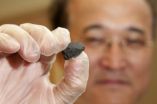(Press-News.org) GAINESVILLE, Fla. — In the rain forests of the Congo, where mammals and birds are hunted to near-extinction, an impenetrable sound of buzzing insects blankets the atmosphere.
Because it is a fairly inaccessible region with political unrest, much of the Congo's insect biodiversity remains largely undiscovered. In a new monographic book published this week in Zootaxa, researchers at the University of Florida and the Royal Museum of Central Africa in Belgium provide insect biodiversity information for this area in Central Africa that increasingly undergoes habitat destruction.
Focusing on a group of leaf-mining moths, researchers name 41 new species, nearly doubling the number previously known from the region. Leaf miners occur worldwide and the biodiversity research is important because some species are agricultural pests, while others help control unwanted invasive plant species. Some are also known to delay plant aging.
"When we began this project, we had no idea how many species would be out there," said co-author Akito Kawahara, assistant curator of Lepidoptera at the Florida Museum of Natural History on the UF campus. "In a two-week field trip, we discovered nearly 50 potentially new species, which is really surprising. There is still an enormous amount of life out there that we know very little of."
Lead author Jurate DePrins has been working on leaf miners in the Congo for nearly 10 years and was joined by Kawahara about five years ago. As the name suggests, the small moths burrow within leaves as larvae, making them particularly difficult to find. Adult moths measure only about 2 to 5 millimeters in length, but they can be extraordinarily beautiful with colorful markings and metallic scales, Kawahara said.
"The caterpillars are completely flat so they can live inside the thin leaf," Kawahara said. "If you think of a regular caterpillar and then you squished it and shrunk it, that's what they look like."
After collecting caterpillars in the wild, researchers raise the larvae to adulthood on-site, a process that takes less than a week for some species.
"It's so hard to tell what's actually happening because they're so small and they get overlooked, but if you look at what is happening inside a leaf under a microscope, it's just an incredible world," Kawahara said. "You'll see a tiny wasp larva living within a caterpillar, and another, even smaller wasp larva living inside that larger wasp larva that is inside the moth larva. It really opens your eyes to this incredible, unknown world and makes you think, 'What is going on here?' It's truly amazing."
Leaf-mining moths have unusual survival strategies, poorly understood by researchers, Kawahara said. Relatives of the new species are known to make "green islands," patches of green leaves found in a pile of brown leaves. When leaves fall from trees and turn brown, the caterpillars preserve the leaves they live in and keep them green.
"Some of these caterpillars actually have the ability to control plant tissue and prevent aging in the plant," Kawahara said. "Now we're trying to actually understand the mechanism behind how they actually do it."
Lithocolletinae, the group that the authors focused on, is one of the oldest-known subfamilies in Lepidoptera, first described by Carl Linnaeus in 1758. The only book describing its species in Africa was published in 1961.
"This is really one of the first major revisions on species level of any of the African members of this large family," said Donald Davis, a research entomologist at the National Museum of Natural History, Smithsonian Institution. "Any of their discoveries is going to be important because it greatly increases what we previously knew, how little we knew."
While many large organisms are being studied, not many researchers focus on the smaller organisms, Davis said. Information about Lithocolletinae is needed to understand which species may be agricultural pests or used to control invasive plants.
"It's an unknown fauna and so they've made a major step to start telling us something about this biota," Davis said. "Because the moths are herbivores, they have both beneficial and detrimental benefits. It's one of the things we get a lot of questions about."
###
Discovery of Africa moth species important for agriculture, controlling invasive plants
2012-12-21
ELSE PRESS RELEASES FROM THIS DATE:
U of T Researchers uncover major source of evolutionary differences among species
2012-12-21
University of Toronto Faculty of Medicine researchers have uncovered a genetic basis for fundamental differences between humans and other vertebrates that could also help explain why humans are susceptible to diseases not found in other species.
Scientists have wondered why vertebrate species, which look and behave very differently from one another, nevertheless share very similar repertoires of genes. For example, despite obvious physical differences, humans and chimpanzees share a nearly identical set of genes.
The team sequenced and compared the composition of hundreds ...
New meteorite suggests that asteroid surfaces more complex than previously thought
2012-12-21
Meteorites that had fallen from an asteroid impact that lit up the skies over California and Nevada in April are showing scientists just how complex an asteroid surface can be. A new study published in Science this week by an international team of researchers describes the speedy recovery of the meteorites and reports that this space rock is an unusual example from a rare group known as carbonaceous chondrites, which contain some of the oldest material in the solar system. The study of these meteorites and others like them could hold answers to unsolved mysteries about ...
Gift misgivings? Trust your gut
2012-12-21
CHESTNUT HILL, MA (Dec. 20, 2012) – The clock is ticking and you still haven't decided what to get that special someone in your life for the holidays. When it comes to those last-minute gift-buying decisions for family and close friends, intuition may be the best way to think your way through to that perfect gift.
When faced with tough decisions, some people like to "trust their gut" and go with their intuition. Others prefer to take an analytical approach.
Boston College Professor Michael G. Pratt, an expert in organizational psychology, says new research shows intuition ...
Meteorite triggered scientific gold rush
2012-12-21
A meteorite that exploded as a fireball over California's Sierra foothills this past spring was among the fastest, rarest meteorites known to have hit the Earth, and it traveled a highly eccentric orbital route to get here.
An international team of scientists presents these and other findings in a study published Friday, Dec. 21, in the journal Science. The 70-member team included nine researchers from UC Davis, along with scientists from the SETI Institute, NASA and other institutions.
The researchers found that the meteorite that fell over Northern California on April ...
Engineers seek ways to convert methane into useful chemicals
2012-12-21
Little more than a decade ago, the United States imported much of its natural gas. Today, the nation is tapping into its own natural gas reserves and producing enough to support most of its current needs for heating and power generation, and is beginning to export natural gas to other countries.
The trend is expected to continue, as new methods are developed to extract natural gas from vast unrecovered reserves embedded in shale. Natural gas can be used to generate electricity, and it burns cleaner than coal.
"With petroleum reserves in decline, natural gas production ...
Clays on Mars: More plentiful than expected
2012-12-21
A new study co-authored by the Georgia Institute of Technology indicates that clay minerals, rocks that usually form when water is present for long periods of time, cover a larger portion of Mars than previously thought. In fact, Assistant Professor James Wray and the research team say clays were in some of the rocks studied by Opportunity when it landed at Eagle crater in 2004. The rover only detected acidic sulfates and has since driven about 22 miles to Endeavour Crater, an area of the planet Wray pinpointed for clays in 2009.
The study is published online in the ...
Lifestyle changes linked to better outcomes after peripheral intervention
2012-12-21
ANN ARBOR, Mich. – Patients who quit smoking and took an aspirin and statin before undergoing treatment for blocked leg arteries were less likely to suffer a complication six months later, according to new research led by the University of Michigan Cardiovascular Center.
But few patients made the lifestyle changes and were on recommended medical therapy that can relieve leg pain and cramping associated with peripheral arterial disease, or PAD.
The registry findings were published online ahead of print in Circulation: Cardiovascular Interventions and reveal a dramatic ...
Study shows heart calcium scan predictive of diabetes-related death from cardiovascular disease
2012-12-21
WINSTON-SALEM, N.C. – Dec. 20, 2012 – People with Type 2 diabetes have two to four times the risk of cardiovascular disease compared to people without the disease. The best way for doctors to predict which diabetes patients are at the greatest risk for heart disease is to use a coronary artery calcium (CAC) test in addition to the most commonly used assessment tool, according to researchers at Wake Forest Baptist Medical Center.
Current medical guidelines recommend treating all diabetes patients as high risk, but the Wake Forest Baptist study found that CAC can identify ...
Scripps Florida scientists create new approach to destroy disease-associated RNAs in cells
2012-12-21
JUPITER, FL, December 20, 2012 – Scientists from the Florida campus of The Scripps Research Institute (TSRI) have developed a new approach to alter the function of RNA in living cells by designing molecules that recognize and disable RNA targets. As a proof of principle, in the new study the team designed a molecule that disabled the RNA causing myotonic dystrophy.
The study, published online ahead of print on December 20, 2012 by the journal Angewandte Chemie, reports the creation of small molecules that recognize disease-associated RNAs, targeting them for destruction. ...
WCS applauds Dept. of Interior plan balancing conservation and energy development in NPR-A
2012-12-21
The Wildlife Conservation Society (WCS) lauded U.S. Secretary of the Interior Ken Salazars announcement of a final management plan for the National Petroleum Reserve-Alaska (NPR-A) that balances wildlife conservation and energy development in the biggest public landscape in the country. The Integrated Activity Plan and Final Environmental Impact Statement (Final IAP/EIS) issued today by the Bureau of Land Management is the first comprehensive land management plan ever developed for the NPR-A.
By protecting extensive coastal plain habitat around Teshekpuk Lake, and the ...



